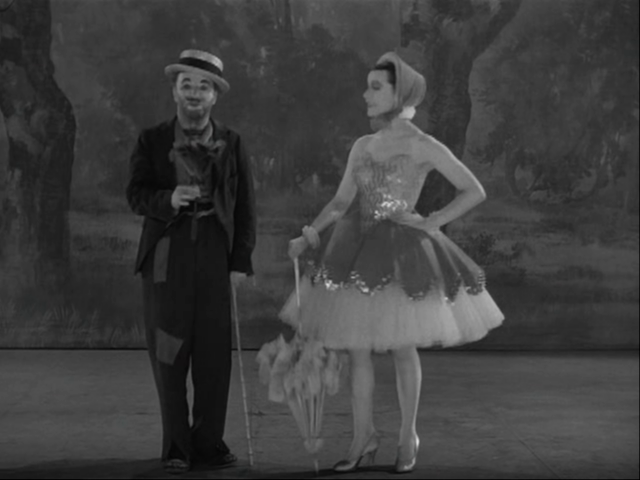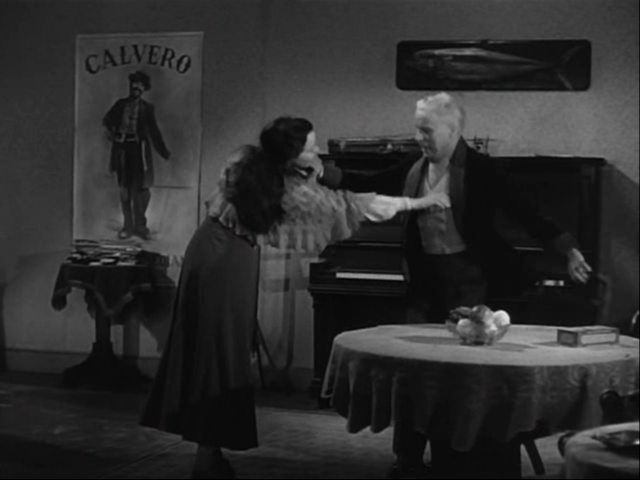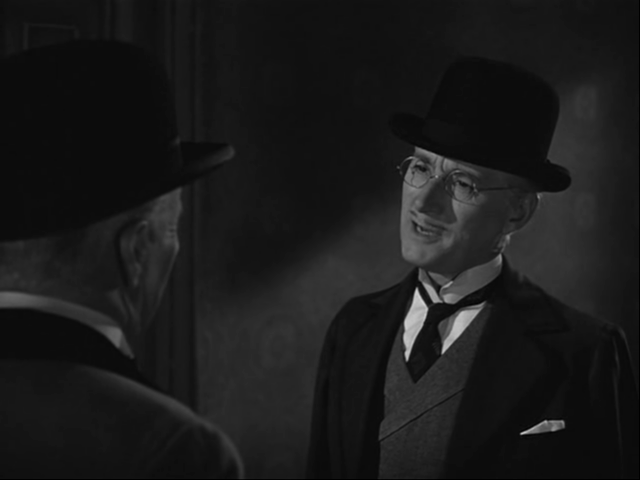
Look, I write extremely black comedies. The third one, Kill Baby Hitler!, will be about just as soon as Fiona finishes proofing it. Maybe one reason I aim for the dark and disturbing is that as a kid I was frequently upset by black comedies because I couldn’t process the lighthearted attitude applied to dark subject matter. So I try to toughen myself up through my own work, on Nietzsche’s principle that “a laugh is an elegy for the death of an emotion.”
Still, when black comedy goes wrong, it IS upsetting. Often this can happen when the authors don’t realise how dark the territory they’re getting into really is. Or when some kind of naked sadism intrudes. Comedy can be cruel, and as with drama the author’s job is to take a bad situation and make it worse, but the attitude informing these choices is all-important (see comedian Richard Herring’s great line “When you enter an area carrying a joke, you have to know why you’re there.”)
I just watched IT’S A MAD, MAD, MAD, MAD WORLD for the first time since I was a kid, and it’s made me miserable. 12 hours after finishing it I feel like Spencer Tracy just before the final gag, wondering if I’ll ever find anything funny again. Maybe I can write myself out of this mood, or maybe I can at least vent my spleen at it, reciprocally. (The movie’s stated intent was to be “the comedy to end them all” — why would anyone want to do that? But it feels like a partial success right now. My sense of humour is bleeding out.)
I warned Fiona going in that when I first saw this thing, as a kid, I laughed maybe twice. This time we laughed quite often, I’ll admit: the film is put together with immense skill and these comics, put in desperate situations, are bound to eke out some comedy: most of the real laughs come from niceties of playing, if one can speak of niceties in a riot.

The mystery behind Stanley Kramer’s bloated Cinerama slapstick shoutfest is not how the serious, well-meaning liberal Kramer made it — in some ways it’s just the kind of comedy a message picture guy might make — it teaches a moral lesson! It has social significance! — and in other ways maybe it connects to aspects of Kramer discoverable elsewhere — the bigger mystery is surely how William Rose went from (mostly) writing THE LADYKILLERS, a perfect miniature of black comedy, to co-writing, with his wife Tanya, this deafening, discordant, gigantic, sprawling, destructive, brutal cascade of misanthropy. But this too may be answerable.
If IAMMMMW resembles anything in Rose’s earlier work tonally, it’d be the Frankie Howerd/Kenneth Connor bit in LADYKILLERS — where an Ealing film gets invaded by two future Carry On stars and the movie momentarily devolves into a lot of yelling, destruction, the ruination of innocent bystanders’ businesses, and the film stops being funny. The scene is structurally important — it establishes Mrs. Wilberforce’s fatal intransigence — but I never found it enjoyable, just upsetting. IAMMMMW is like this sequence magnified by a thousand.


We might also implicate THE ‘MAGGIE’, Rose’s innocuous Scottish comedy, his other collaboration with LADYKILLERS’ Alexander Mackendrick: we have another expensive journey, another “ugly American” archetype (Paul Douglas, beautifully cast), another would-be catharsis of mass laughter. Per Wikipedia, IAMMMMW was originally set in Scotland, provisionally entitled SO MANY THIEVES, and then SOMETHING A LITTLE LESS SERIOUS. The idea was later dug from his trunk, presented to Kramer, and went through the titles WHERE, BUT IN AMERICA? then ONE DAMN THING AFTER ANOTHER — both of which I like better than the eventual one (I forget which critic summed the whole movie up with “One mad too many.”) I’m very curious as to what a Scottish version of this story, maybe produced by Ealing with Mackendrick in charge, would have looked like, and who’d have been in it.
Who is in it? Not quite everybody. Although, interestingly, the main characters asides from Tracy are more a mixture of TV stars and character players than comedy film legends. The real megastars have mainly walk-ons. I’m not absolutely sure how famous Milton Berle, Sid Caesar, and Jonathan Winters were at this point outside America. But it doesn’t really matter at this stage — and Winters is maybe the most consistently funny actor in the film. And they had to save money SOMEWHERE, this thing is HUGE.




“I love broken-down actors,” said Kramer, or words to that effect. I would like him to amplify and explain. But he certainly got astonishing work from Judy Garland and Monty Clift in JUDGEMENT AT NUREMBERG, and he’s certainly assembled an incredible array of the walking wounded here: alcoholics, recovering alcoholics, depressives, manic-depressives, and one tragic victim of advanced Mickey Rooney Syndrome. He has clearly encouraged them all to perform at the top of their lungs rather than their games. These are all one-note performances, which they probably needed to be (one-dimensional characterisation in ensemble farce is no bad thing) but sometimes you have multiple actors assigned the same note (noisy desperation, say) so that they get into a scrimmage over it like starving dogs at a bone, not very enlightening.
It should be admitted that the Roses’ script is very well constructed — the way the characters come together, separate, multiply, hit walls both physical and emotional, is extremely well organised. But starting at top pitch is an obvious rookie mistake, especially in a three hour movie…

A friend who has a soft spot for the film admits that while it has a good story, it’s not a suitable story for a comedy. The misadventures of the various characters on the trail of the loot are broadly (and I mean broadly) comedic, but Spencer Tracy is living in a tragedy. Nothing the actor (who could be funny) can do changes this. Putting in William Demarest as comic foil just points up how miserable this storyline is — a good man losing everything, even his virtue. It’s horrible. The whole story might make an effective film noir — it’s about greed and false values and the slow decay of the moral sense.
Now THE LADYKILLERS is about criminals. Criminals who die. Producer Michael Balcon, after hearing the pitch, protested “There are six characters and at the end five of them are dead, and you say it’s a comedy?” But it is. Maybe part of why it works is that the criminals don’t deserve to win, so while we can get interested in their schemes we maintain safe comic distance from their fates, and their downfall is highly ironic: they’re defeated by their own squeamishness about killing Mrs. Wilberforce, who raises no finger against them, and by their own internal divisions.

Let’s jump to Spielberg, a great fan of this film, who made 1941 (1979) in emulation of it. He showed the script to his hero, Chuck Jones, who advised against making it on the basis that there were no sympathetic characters. I’m not sure if that’s 100% true of 1941, but it feels true. (One could demand of Jones who is the sympathetic character in the Road Runner cartoons? — the Coyote is both villain and protagonist and the Road Runner can’t really be called a character at all, more of a feathered McGuffin, a passive embodiment of speed. But different rules apply to six minute cartoons and three hour features.)
Spielberg realised 1941 was in trouble by the time he hit post. “I was relying on John Williams to pull it back in,” he may have said (I’m quoting from memory here) “But then I realised John was overplaying his score to match my overdirection of Zemeckis & Gale’s overwritten script.” And so, while I’m trying to mention the good things about IAMMMMW, I should mention Ernest Gold’s soundtrack, which is big and bombastic to match the visuals, but also witty and even delicate in places. It often aims for a graceful counterpoint, like Chaplin’s music. It only goes wrong at the end, I think, and then it’s hard to blame Gold. I’ll get to that.

Back to IAMMMMW’s themes and why it’s not, to me, a successful comedy. The theme of greed lacks irony. The principle characters are mostly motivated by it, and destruction follows. But they aren’t really offered any more positive choices: money is dangled before them and they go after it, as who wouldn’t? Their real crimes are perhaps their inability to work together or even get along socially, and their increasing ruthlessness along the way. The men all become monsters pretty instantly; the wives are more reasonable, like most sitcom wives, rather thankless roles; walking, raging mother-in-law joke Ethel Merman is a monster already, and Michey Rooney radiates malevolence from the off. If you channel-hopped to BABY-FACE NELSON you might not notice.
That working title, WHERE, BUT IN AMERICA? certainly suggests a satiric intention behind this. Rose and Mackendrick had been accused of being anti-American in their mistreatment of Paul Douglas in THE ‘MAGGIE’. To which Mackendrick had pointed out, truthfully, that he and Rose were both Americans. Still, though — surely Americans can be just as anti-American as the rest of us?

There’s also a tirade by Terry-Thomas’ character against American matriarchy which seems heartfelt, and is borne out by the Merman character’s unbelievable obnoxiousness, but not really by the other female characters, who often try to act as moderating influences on their men’s excesses, and usually don’t have much luck with it, which seems to undercut this critique.
While many of the characters are nasty, mean, vicious and loud, there are occasionally quiet or sweet ones, but the film doesn’t treat them any better than it does the bastards, whom it ruins and mangles. The two garage guys played by Marvin Kaplan and Arnold Stang, seem inoffensive, and are only inspired to do wrong because Phil Silvers tricks them. They’re then set upon by Jonathan Winters (they say a madman has the strength of ten) and their entire garage is pulled apart around them, while their attempts at self-defence rebound against them. (“You broke my arm!” is the kind of line we don’t need in a slapstick routine. Occasionally, the film’s attempts at exacerbating its characters’ woes does work, as when Rooney and Buddy Hackett, trapped in the air in a plane with an unconscious pilot, get Bilko‘s Paul Ford on the radio to talk them through landing, and discover to their horror that he’s a dithering, blithering fool who can’t come to the point. “He’s not gonna help us!” wails Hackett. When this stuff works, in the context of so much that doesn’t, it feels miraculous, alchemical, and makes the surrounding misery harder to explain.)


The short version of the film lacks even a mercy shot to prove that Kaplan & Stang survive the building collapsing on them. The long version does include a mercy shot of the boys emerging from the rubble, complaining bitterly to the cops about their non-intervention. “They’re still alive,” says one cop, in wonderment, to establish that they were calmly watching from a distance what they fully believed to be a doublehomicide in progress. Yeah, for plot reasons the cops are letting all these characters run amok. This might otherwise fall under the heading of “an amusing conceit,” but no, not really. Massive property damage and personal injury to Jewish business owners while the authorities look on, indifferent? A very Keystone Kristallnacht.
I want to congratulate the art department for creating props, vehicles and buildings which collapse not only spectacularly but with artful comic timing — but I have to deduct points for making a billboard out of the wrong material, thereby nearly killing the pilot who had to crash through it.

What disturbs me in a comedy and makes me unable to enjoy it is when we get glimpses of a sick mind at work, or maybe there’s an accidental misjudgement of tone which results in something only a sick mind would deliberately create (it’s kind of how I feel about the universe, surely not the product of a well-meaning deity who knows what he’s doing). In THE HANGOVER, everyone is nasty. A doctor, asked if he knows a location, replies “Sure, it’s on the corner of Fuck You and Get a Map.” And this is a doctor. And, in IAMMMMW we have a firefighter, played by Sterling Holloway, admonishing the male leads against using his ladder all at once — the fire escape they’re clinging to is collapsing, so we understand their haste — “You’ll see, you’ll see!” With a grin that reads as kind of sadistic.
It all ends, finally, with the main male characters being flung from the malfunctioning fire engine ladder, to land in various painful circumstances. Two hit some power lines on the way down, causing Fiona to say “This is torture porn.” Ernest Gold’s music treats the scene as a sort of fairground waltz affair, which is a brave stab at lightening the tone but creates instead a painful, sadistic mismatch.

It’s interesting that Kramer is a liberal and a maker of worthy tracts on social issues, because he has Eddie “Rochester” Anderson land in the lap of a statue of Lincoln. I did sort of cough out a laugh here from sheer shock, but this is surely a racist joke if ever there was one. The horrible landings dealt out to the other characters don’t seem to be coded to fit their personae. It’s like they said, well, we could have him land in white paint or whipped cream, but let’s try for something more elevated.
(This sequence features the film’s only obvious dummies — the stuntwork is amazing elsewhere, and Kramer is really good at cutting around the substitution of stunties for thesps — and also some stop-motion animation courtesy of Jim Danforth, with Willis H. O’Brien supervising I believe.)
And then everybody winds up in hospital, baroquely decorated in plaster casts, a hideous groaning set of gargoyles. (Anderson alone is hung in chains; Peter Falk gets an eye patch.) It reminds me of the expressive war hospital in Borzage’s A FAREWELL TO ARMS or the agonizing end of Pabst’s WESTFRONT 1918. Other laugh-fests I’m reminded of are SECONDS and THE TENANT. Tracy, appropriately I guess, has been bandaged up in a crucifixion pose, and bemoans at length the complete destruction of his life, family, future. Then Ethel Merman slips on a banana peel and everybody laughs.





This is, I guess, some kind of “testament to the healing power of laughter,” but the only occasion for hilarity the movie can imagine is a woman falling down and getting hurt.
That’s all. I had to get it out of my system. I’m finishing this three days after watching the film and it hasn’t left me yet. I admit this review is overlong and overly-bitter — but have you seen the movie lately?
IT’S A MAD, MAD, MAD, MAD WORLD stars Henry Drummond; Kappy Kapstetter; Chief Caveman; Tennessee Steinmetz; Lieutenant Hurwitz; Mr. Yunioshi; L.S.D. – Lorenzo St. DuBois; MSgt. Ernest G. Bilko; Cadogan de Vere Carlton-Browne; Wilbur Glenworthy/Harry Glenworthy; Miss Olsen; Lily Olay; Little Joe Jackson; Mr. Magoo (voice); Luther Grilk; Osgood Fielding III; Mike Strager; Sergeant Towser; Col. John T. Hall; Sgt. Heffelfinger; Link Appleyard; Mrs Weinstein; Columbo; Slip Mahoney; Winnie the Pooh (voice); Frisbee; Mr. Witherspoon; Friendless; Barney Fife; Max Jacobs; Moose Malloy; Sebastian Sholes; Prunella Judson; Saul Bloom; Sparrow; Healy’s Stooges; J. Sinister Hulk; Julius J. McCracken; Joseph Tura; Stanislaus ‘Duke’ Coveleskie; Fatty’s Fiancée; and Norman Phiffier.











